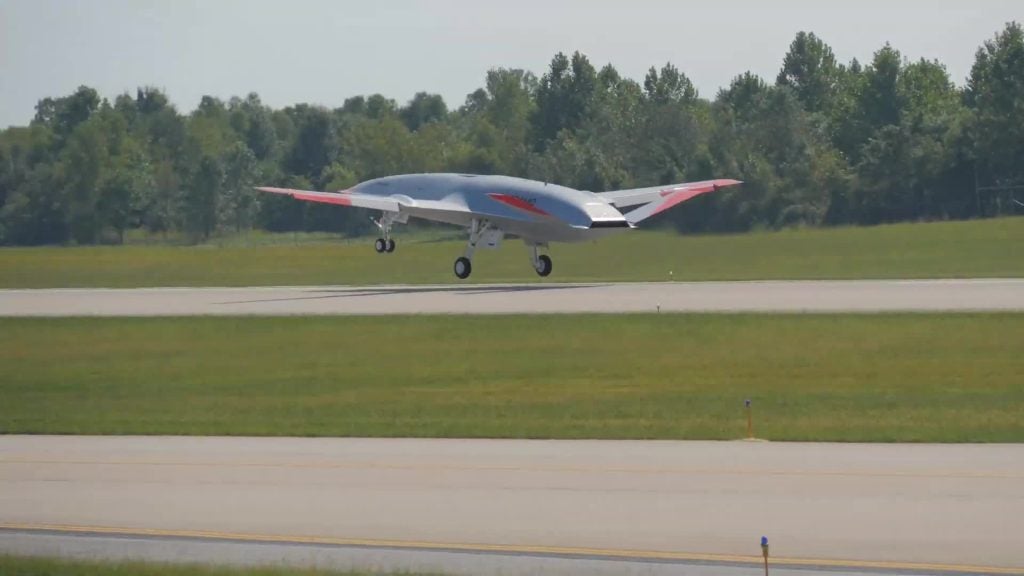Boeing MQ-25 Completes First Test Flight
The US Navy and Boeing report that the Boeing MQ-25 Stingray has successfully completed its first test flight at MidAmerica Airport in Mascoutah, Illinois on September 19. The Tail 1, or T1 test asset completed an FAA-certified autonomous taxi and takeoff and then flew a pre-determined route for two hours to validate the aircraft’s basic flight functionality and communications with its ground control station. Boeing test pilots directed the flight from a ground control station at the airport, which is the current base for the MQ-25 testing program.
In a Boeing press statement, Boeing MQ-25 Program Director Dave Bujold said:
Seeing MQ-25 in the sky is a testament to our Boeing and Navy team working the technology, systems and processes that are helping get MQ-25 to the carrier. This aircraft and its flight test program ensures we’re delivering the MQ-25 to the carrier fleet with the safety, reliability and capability the U.S. Navy needs to conduct its vital mission.
“Today’s flight is an exciting and significant milestone for our program and the Navy,” said Capt. Chad Reed, the Navy’s Unmanned Carrier Aviation (PMA-268) program manager in a separate Navy statement. “The flight of this test asset two years before our first MQ-25 arrives represents the first big step in a series of early learning opportunities that are helping us progress toward delivery of a game-changing capability for the carrier air wing and strike group commanders.”
The Boeing-owned T1 received its FAA experimental airworthiness certificate earlier in September, according to Boeing. It is currently being used for early learning and discovery for the development of software and systems in support of the MQ-25 program’s target of initial operational capability in 2024.
Boeing expects to begin deliveries of the 4 engineering and manufacturing development prototypes ordered by the Navy in 2021, after being awarded a contract for them in August 2018.
The MQ-25 is a Navy Maritime Accelerated Acquisition program, with the aim to deliver an unmanned aerial refuelling capability to the fleet as soon as possible. It is hoped that the MQ-25’s deployment will be able to extend the reach of the Navy’s carrier air wings. Moving to the MQ-25 will also free up F/A-18E/F Super Hornets currently being used as buddy tankers following the retirement of the S-3 Viking, a task that takes up significant amounts of flight time and incurs heavy wear on the airframes.

